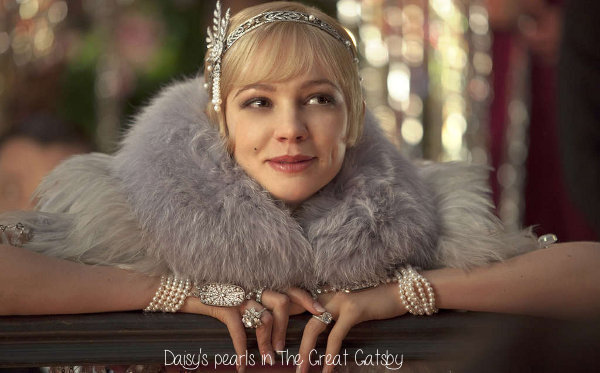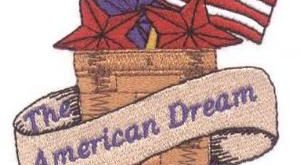When Are Pearls Mentioned in the Great Gatsby? Pearls are a key symbol in the novel, representing wealth, status, and control—especially in the context of Tom and Daisy Buchanan’s relationship. With reference to symbolism and literary analysis, symbols play a powerful role in The Great Gatsby, adding depth to its themes of wealth, power, and the American Dream.
One of the most striking symbols in the novel is pearls, particularly in connection with Daisy Buchanan. Pearls are mentioned in a key scene before Daisy’s wedding, representing the wealth and status that ultimately dictate her decisions. But do they signify love, control, or regret? This article explores the meaning of pearls in The Great Gatsby, analyzing their significance in Daisy’s choices and Fitzgerald’s broader commentary on materialism.

When Are Pearls Mentioned in The Great Gatsby?
The most significant mention of pearls occurs when Tom gives Daisy an extravagant string of pearls worth $350,000 as a wedding gift. This moment is crucial because:
- It happens just before Daisy marries Tom, cementing her commitment to wealth and social status.
- On the night before the wedding, Daisy gets drunk and almost calls off the marriage, clutching a letter—presumably from Gatsby—before discarding it and accepting Tom’s pearls.
This scene foreshadows her later decision to stay with Tom instead of running away with Gatsby, reinforcing the novel’s themes of materialism and social pressure.
Pearls as a Symbol of Wealth and Status
Throughout history, pearls have been associated with wealth and high society. In The Great Gatsby:
- They symbolize the elite class Daisy belongs to, making her a “prized possession” of Tom.
- They contrast with Gatsby’s extravagant displays of wealth, which lack the historical prestige of Old Money.
Daisy’s pearls are not just jewelry—they represent her privilege and the expectations placed upon her as a wealthy woman.
The Connection Between Pearls and Control
Tom Buchanan’s gift of pearls is more than a generous wedding present; it symbolizes his dominance over Daisy.
- Financial Control: Tom uses wealth to secure Daisy’s loyalty.
- Social Expectations: The pearls represent her role as a high-society wife, expected to maintain appearances rather than pursue her heart’s desires.
Daisy’s breakdown before the wedding suggests she realizes the weight of her decision—but ultimately, she chooses security over love.
Pearls vs. Gatsby’s Gold and Glitter
Gatsby, in contrast to Tom, tries to win Daisy back with golden symbols—his lavish mansion, expensive parties, and flashy displays of wealth. However:
- Gatsby’s wealth is new and showy, while Tom’s pearls represent inherited status.
- Pearls have lasting value, while Gatsby’s golden illusions fade as his dream crumbles.
Daisy’s eventual choice to stay with Tom suggests that deep down, she values security over Gatsby’s unstable dream.
The Role of Pearls in Daisy’s Character Development
Daisy’s relationship with the pearls raises an important question: do they reflect her true desires or society’s expectations?
- If she keeps them willingly, it suggests she values comfort and wealth over love.
- If she feels trapped by them, it highlights her lack of agency in a male-dominated world.
Ultimately, Daisy’s inability to part with her pearls mirrors her reluctance to leave Tom—even when Gatsby reappears.
Fitzgerald’s Criticism of Materialism Through Pearls
Fitzgerald uses pearls to critique the empty pursuit of wealth. Throughout the novel:
- Material possessions like pearls fail to bring happiness.
- Wealth creates power imbalances, trapping characters in toxic relationships.
- Social class dictates fate, leaving little room for true love or freedom.
Daisy’s pearls represent the illusion of happiness in high society—beautiful but restrictive.
Quotes about the Pearl Necklace in the Great Gatsby:
Some quotes about pearls in the Great Gatsby are as follows:
In The Great Gatsby, pearls symbolize wealth, materialism, and the constraints of societal expectations, particularly in relation to Daisy Buchanan. Here are the key quotes mentioning a pearl necklace:
- Tom’s Wedding Gift to Daisy
“He gave her a string of pearls valued at three hundred and fifty thousand dollars.” (Chapter 4)- This extravagant gift symbolizes Tom’s wealth and how Daisy is essentially “bought” into their marriage. It highlights the materialistic nature of their relationship.
- Daisy’s Breakdown Before the Wedding
“Suddenly she threw the necklace on the trash can lid and ran out of the house, ‘Take ’em downstairs and give ’em back to whoever they belong to. Tell ’em all Daisy’s changed her mind. Say: ‘Daisy’s change’ her mine!’” (Chapter 4)- This moment reveals Daisy’s internal conflict between love (for Gatsby) and societal expectations (marrying Tom). The pearls represent the life she is about to choose, despite her doubts.
- The Next Day, Daisy Goes Through with the Wedding
“But she didn’t say another word. We gave her spirits of ammonia and put ice on her forehead and hooked her back into her dress and half an hour later when we walked out of the room the pearls were around her neck and the incident was over.” (Chapter 4)- This chilling moment shows how Daisy is pressured into marrying Tom, ultimately surrendering to wealth and security rather than true love. The pearls symbolize her entrapment in a loveless, materialistic marriage.
These quotes emphasize how Daisy’s choices are influenced by wealth and social pressure, making the pearl necklace a powerful symbol in the novel.
FAQs
- What do the pearls symbolize in The Great Gatsby?
They symbolize wealth, control, and the social expectations that dictate Daisy’s choices.
- Why does Daisy break down before her wedding?
She briefly considers rejecting Tom for Gatsby but ultimately chooses the security of wealth.
- How do the pearls contrast with Gatsby’s gifts?
Tom’s pearls symbolize established wealth and control, while Gatsby’s gifts represent fleeting dreams and new money.
- Does Daisy love Tom or Gatsby?
Daisy is torn between them, but her decision to stay with Tom suggests she prioritizes security over passion.
- What is the significance of pearls in literature?
Pearls often symbolize purity, wealth, or entrapment—fitting themes for Daisy’s character.
- What does Fitzgerald say about wealth in The Great Gatsby?
He critiques the idea that wealth brings happiness, showing how it leads to control and disillusionment.
Conclusion
The pearls in The Great Gatsby are more than just an expensive gift—they represent Daisy’s entrapment in a world of wealth and social expectations. While Gatsby’s love offers excitement and dreams, Tom’s pearls symbolize stability and control.
Ultimately, Daisy’s choice to keep the pearls reflects the novel’s broader message: in a world where class and money dictate fate, true love often comes second. Fitzgerald’s critique of materialism remains relevant today, reminding us that wealth cannot buy happiness or freedom.
Useful Resources:
How Were the Poor in The Great Gatsby Portrayed?



